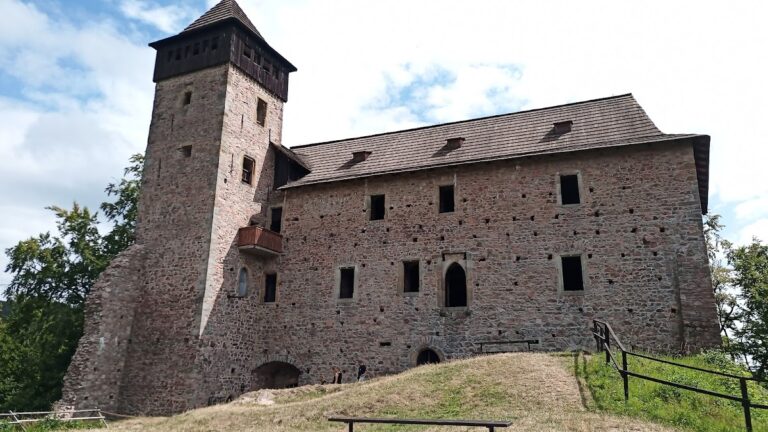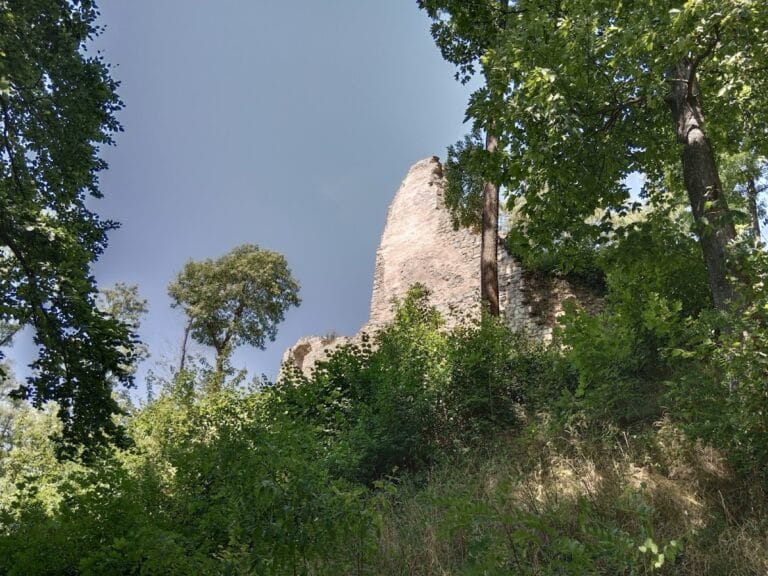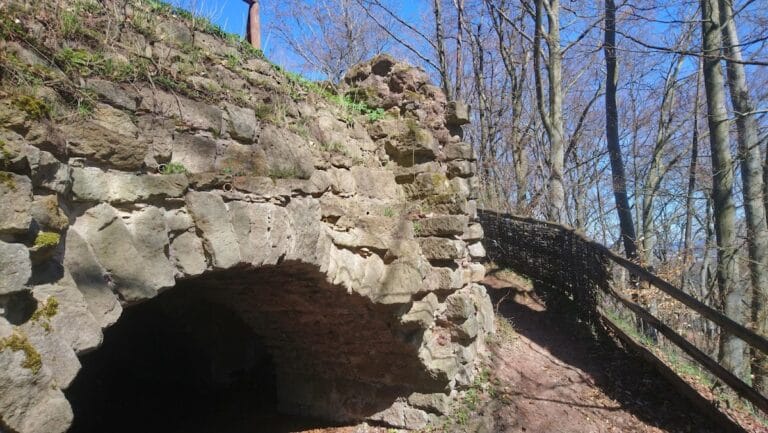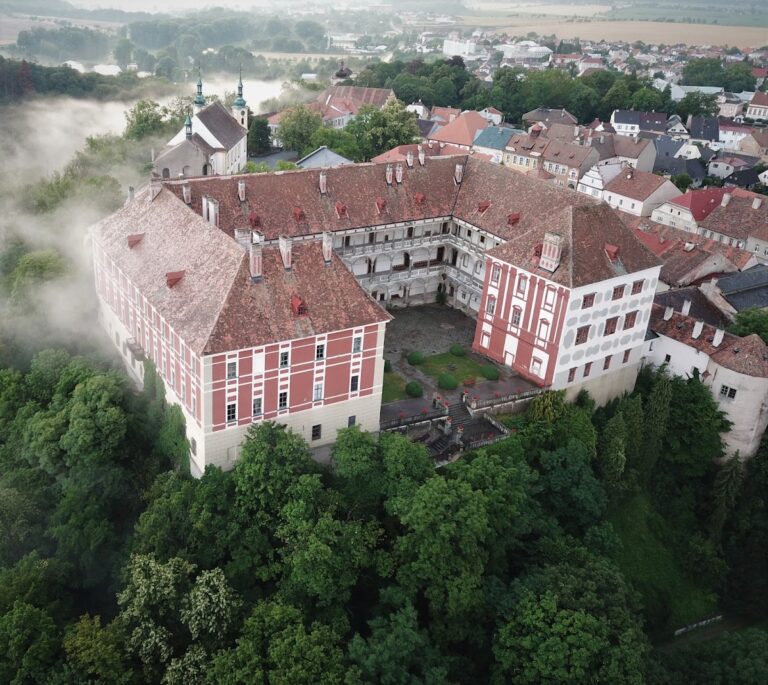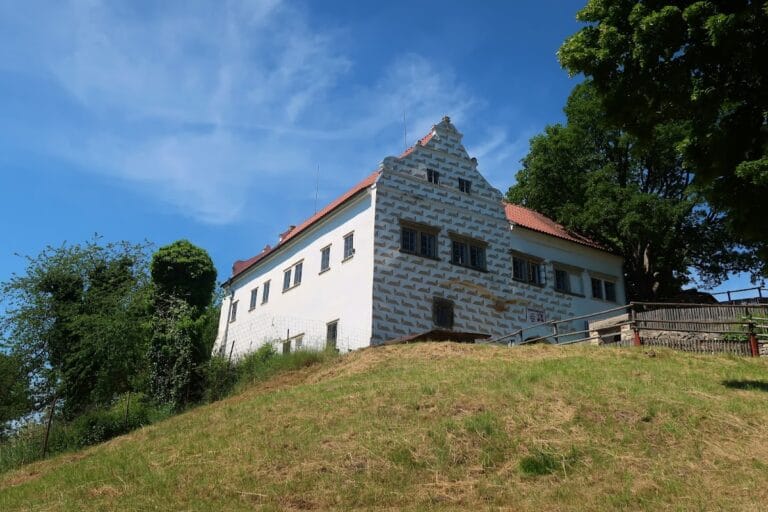Potštejn Castle: A Medieval Fortress in the Czech Republic
Visitor Information
Google Rating: 4.6
Popularity: Medium
Google Maps: View on Google Maps
Official Website: www.potstejn.cz
Country: Czechia
Civilization: Medieval European
Remains: Military
History
Potštejn Castle is situated near the village of Potštejn in the modern Czech Republic and was established by medieval Bohemian nobility. It emerged at the close of the 13th century during the period of regional colonization along the middle Divoká Orlice river. The castle’s name originates from its founder, Půta of the Drslavic family, with the original form “Puttenstein” evolving into Potštejn over time.
In the early 14th century, the castle was held by Procek and his son Mikuláš of Potštejn, who became embroiled in conflicts with the urban elite of Prague. Mikuláš turned into a robber knight, resisting the ruling Luxembourg dynasty. His actions provoked a military response; in 1339, the castle was besieged and destroyed by Margrave Charles, a future Emperor Charles IV, during which Mikuláš died. Despite this setback, royal authority restored much of the family’s holdings to Mikuláš’s sons in 1341, though the castle itself remained under the crown’s control. Subsequently, Charles IV purchased Potštejn in 1356, initiating reconstruction and establishing it as a key royal estate.
Throughout the 14th and 15th centuries, Potštejn changed ownership multiple times among various noble families due to pledges, sales, and debts. During this era, it served as a refuge for the Hussite commander Bedřich ze Strážnice, who died there in 1459. Financial difficulties led to the estate’s sale in 1495 to Vilém of Pernštejn, under whose direction the castle became an important administrative and residential hub for over fifty years.
The Pernštejn family undertook a significant rebuilding campaign in the early 1500s, enhancing the castle’s defenses and administrative facilities. Historical records from this period detail an extensive staff, including a burgrave, reflecting its function as a regional center of power. Later ownership passed to families such as the Hrzáns of Harasov and eventually the Záruba family. By the early 17th century, the castle’s importance waned, leading to partial abandonment and decline.
In 1746, Jan Ludvík Harbuval Chamaré acquired the castle along with the nearby town. He commissioned the construction of a new chateau within the town and added Baroque-style religious buildings to the castle precincts. Inspired by local legends and a misunderstood Latin inscription thought to hint at hidden treasure, Chamaré also led excavations that damaged parts of the site. Despite these treasure hunts, no medieval treasure has ever been uncovered.
By the late 19th century, the castle ruins attracted visitors as a historical curiosity. Conservation initiatives commenced in the 1930s but were disrupted during the Second World War. Following political changes after 1989, the local municipality took ownership, opening the site to the public in 1994 and beginning comprehensive preservation and adaptation efforts.
Potštejn holds cultural significance as the setting for Alois Jirásek’s historical novel “Poklad” (“The Treasure”), which helped popularize stories of a hidden hoard beneath its ruins and contributed to the castle’s enduring place in Czech heritage.
Remains
Potštejn Castle’s remains occupy the summit of a forested, conical hill southeast of the adjacent village, with the layout primarily corresponding to what was once the upper castle area. This section originally featured a bergfried, a tall fortified tower typical of medieval fortresses, serving as its primary stronghold.
The earliest major construction phase dates from the late 13th century, marking the initial fortification of the hilltop. Mid-14th-century enhancements under King Charles IV included a now-lost economic building positioned behind the fifth gate and establishment of the castle chapel around 1360. These additions expanded the site’s functional and spiritual aspects within the complex.
In the early 16th century, Vilém of Pernštejn’s extensive rebuilding reshaped the upper castle and its defenses. This work added an access corridor, two new curtain walls—these are protective walls connecting towers or bastions—and several semicircular bastions designed to accommodate firearms of the period. Notably, the curtain walls were robust, averaging 1.4 meters in thickness and standing about six meters high, topped with a battlemented wall walk that permitted defenders to move and fire along the ramparts. The bastions incorporated gunports to mount heavy artillery, indicating the adaptation to evolving military technology.
A key defensive element is the second gate, which is approached over a double masonry transverse ditch spanned by a drawbridge. The corridor leading to this gate is vaulted, and the adjacent bastion is earth-covered, creating a bolwerk—a defensive outwork designed to mount powerful artillery—enhancing the castle’s resistance during sieges. Nearby, a cylindrical tower protected the castle’s well and connected to the corridor wall via a masonry neck, ensuring secured water access.
The upper castle became nearly enclosed by perimeter buildings featuring numerous stone architectural details, reflecting its transformation into a comprehensive defensive and residential complex. In the late 16th century, Renaissance-era modifications commissioned by Adam Šťastný of Harasov introduced residential upgrades, including the addition of a fourth floor to the fifth gate and adaptations to the northeast wing. These works were designed by the Italian architect Burian Gozzi, integrating Renaissance stylistic elements into the medieval structure.
The 18th-century Harbuval Chamaré family contributions include Baroque sacral constructions within the castle grounds. The Chapel of the Holy Stairs, built between 1762 and 1766, remains well preserved and stands between the lower courtyard and the upper castle’s outer bailey. Another chapel dedicated to St. John of Nepomuk was constructed in the early 1750s; it suffered fire damage shortly after completion and was subsequently repaired but eventually fell into ruin. A Baroque Stations of the Cross pathway links the town church to the castle, culminating in a central Calvary located near the northern part of the bolwerk by the second gate.
Today, the surviving castle ruins feature fragments of the palace, residential chambers, the chapel, expansive curtain walls with their bastions, and two principal gates. Conservation efforts during the late twentieth century involved clearing vegetation, stabilizing structures, roofing the fourth gate to protect it, and partially restoring the front section of the fifth gate. This gate now serves as a visual element that highlights the castle’s historic silhouette.
Archaeological investigations have revealed evidence of earlier settlement near the castle, including prehistoric artifacts linked to Lusatian and Silesian-plateau cultures. Medieval finds encompass pottery fragments, metal objects, and sets of roof tiles, reflecting the site’s long history of occupation and use. Despite many treasure hunts driven by local legend and misinterpretation of inscriptions dating from the 18th century, no medieval hoards were uncovered. The castle’s ruins dominate the local landscape and provide views across the surrounding foothills and mountains.





